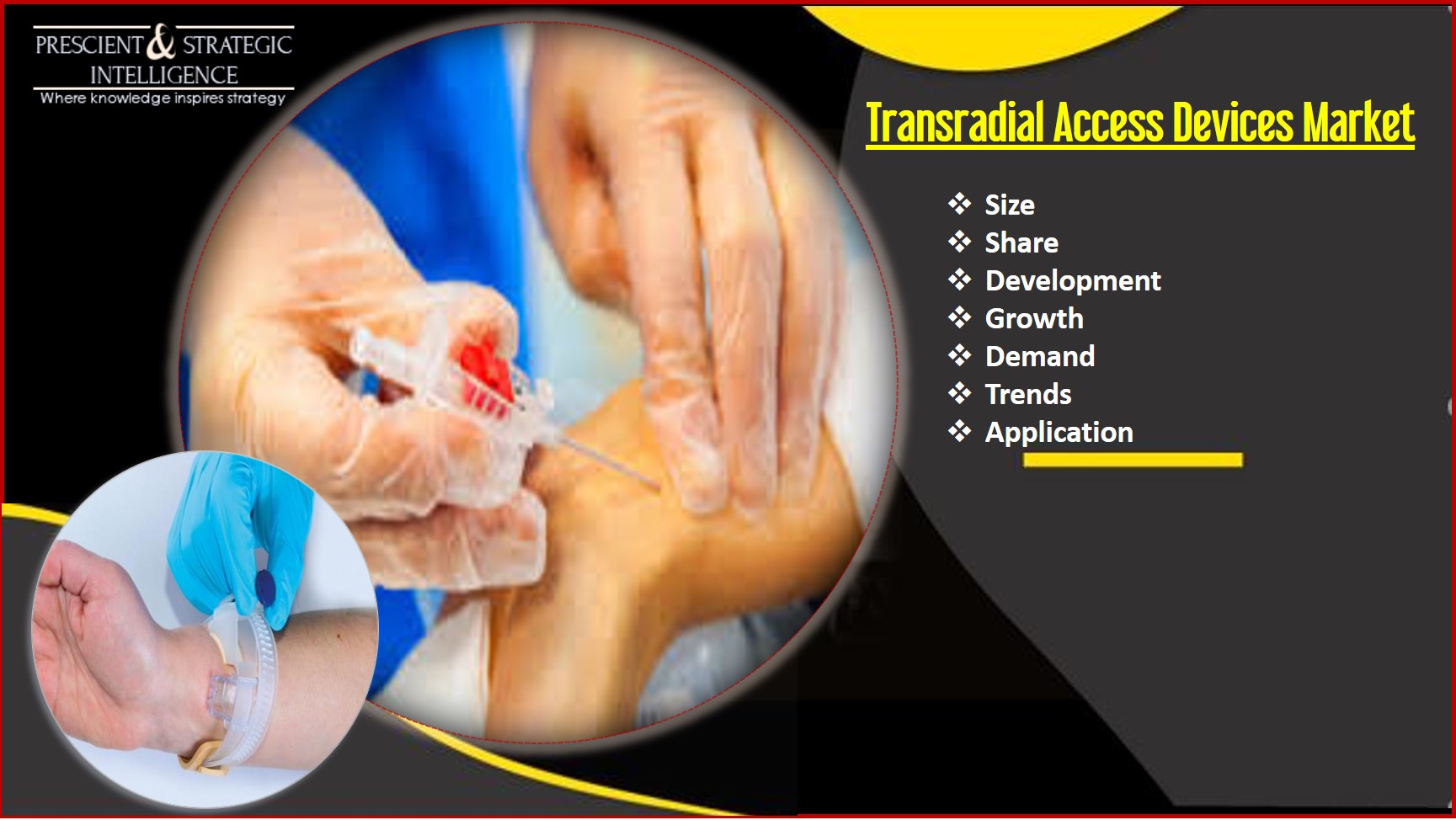Transradial Access Devices Market and its Growth Prospect in the Near Future
(prsubmissionsite) January 30, 2020 The market is experiencing growth due to the increasing prevalence of chronic diseases, preference of radial artery for interventional procedures, and use of these devices in high-risk as well as geriatric patients. Such devices are used for endovascular procedures, involving catheterization or intervention in the radial artery, for the diagnosis and treatment of diseases such as peripheral artery disease and coronary heart disease.
A trend of increasing focus on the development of robot-assisted catheter systems for the treatment of various diseases is emerging in the transradial access devices market. For instance, Corindus Vascular Robotics Inc., in January 2016, installed its first CorPath System and launched the CorPath robotic-assisted coronary intervention program at Massachusetts General Hospital. The system provides protection to both, patients and medical practitioners, from radiation exposure during percutaneous coronary interventions. Similarly, in October 2014, Hansen Medical Inc. unveiled the Sensei X2 robotic system in Europe and the U.S., which serves as a navigation system during electrophysiology procedures in the heart atria that involve robotic catheters.
Request to Get the Sample Pages at:
https://www.psmarketresearch.com/market-analysis/transradial-access-devices-market/report-sample
The transfemoral approach causes complications such as hematoma formation, extravasation, thrombophlebitis, and infiltration. Many studies have reported the transradial approach to be better than the transfemoral one, as it lowers the mortality risk in patients with ST-elevation myocardial infarction and other diseases. It provides improved comfort in patients during the procedure and helps them regain their mobility faster as compared to the transfemoral approach. These advantages associated with the transradial technique are expected to drive the market forward.
The transradial access devices market is segmented by geography, application, end user, and product. The end user segment is categorized into clinical and ambulatory centers, hospitals, and others. In 2017, the hospital category generated the highest revenue and it is expected to be the fastest-growing category during the forecast period. The various application areas of transradial access devices include fluid and nutrition administration, drug administration, diagnostics and testing, and blood transfusion. Among these, drug administration contributed more than 45.0% revenue to the market in 2017.
This is because vascular access devices are increasingly being used for drug administration to treat several types of infections and cancer. The wide acceptance of transradial intervention for percutaneous coronary interventions in Europe has made Europe the largest contributor to the transradial access devices market. The continent contributed over 40.0% of the total global revenue to the market in 2017. Another contributing factor to this is the establishment of same-day discharge cath labs in Europe that have helped in making transradial access devices popular.
Therefore, the market is expected to witness a boom as such devices help patients recover faster.
About P&S Intelligence
P&S Intelligence is a provider of market research and consulting services catering to the market information needs of burgeoning industries across the world. Providing the plinth of market intelligence, P&S as an enterprising research and consulting company, believes in providing thorough landscape analyses on the ever-changing market scenario, to empower companies to make informed decisions and base their business strategies with astuteness.
P&S Intelligence
Toll-free: +1-888-778-7886 (USA/Canada)
International: +1-347-960-6455
Email: enquiry@psmarketresearch.com
Summary
In 2017, the global transradial access devices market generated a revenue of $14.9 billion, and it is anticipated to grow at a CAGR of 8.4% during the forecast period (2018–2023).
Source
https://www.psmarketresearch.com/market-analysis/transradial-access-devices-market


Leave a Reply
You must be logged in to post a comment.